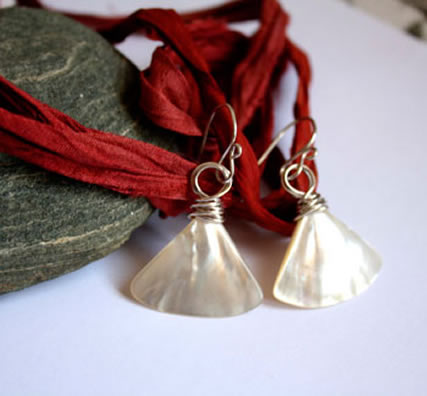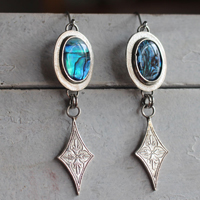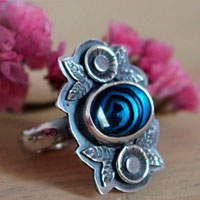- Jewelry
- Inspiration
- Our imagination
- Birthstones
- Celebrating with Eternal Flowers
- Druids and druidesses
- Flower meanings
- History, archeology jewelry
- History and healing properties of metals
- History and healing properties of stone
- Illumination jewelry
- Japanese symbols
- Maya calendar jewelry
- Stone color symbolism
- Stones catalogue
- Wedding anniversaries
- Searches a theme on the site
- Good Deals
- Paintings
- About
- Contact
JEWELRY
- Anklet
- Bracelets
- Brooches
- Cufflinks
- Earrings
- Pendants & Necklaces
- Rings
- Draw your jewelry
- How to clean your jewel
- Metal we used
INSPIRATION
- Our imagination
- Birthstones
- Celebrating with Eternal Flowers
- Druids and druidesses
- Flower meanings
- History, archeology jewelry
- History and healing properties of metals
- History and healing properties stones
- Illumination jewelry
- Japanese symbols
- Maya calendar jewelry
- Stone color symbolism
- Stones Catalogue
- Wedding anniversaries
- Searches a theme on the site
Nacre and Shell: history, healing properties and lithotherapy

Nacre and shell properties

The shell, a hard and robust outer layer, is a characteristic feature of many marine animals, providing essential protection against predators and external threats. Inside, mother-of-pearl unveils its splendor—a surface often smooth and polished, evoking the wonders of the ocean and the delicacy of natural forms. This phenomenon occurs when certain mollusks secrete successive layers of nacre to shield their bodies from foreign elements, such as parasites or grains of sand.
Although some authors address the shell, mother-of-pearl, and pearl separately, these three elements fundamentally originate from the same material. The pearl, a rarer and more complex defensive reaction in certain mollusks, holds its own rarity and unique history, distinguishing its essence and significance from other components of the shell. It is this rarity that grants the pearl exceptional symbolic and monetary value, making it an object of desire and mystique in many cultures throughout history.
The shell, primarily composed of mother-of-pearl, exhibits remarkable chemical richness. Mother-of-pearl is predominantly made up of two fundamental components: an organic protein-rich matrix, mainly conchiolin, and an inorganic deposit of calcium carbonate in the form of aragonite crystals. These crystals are arranged in very thin layers, creating the characteristic luster and durability of mother-of-pearl. This deposition process not only enhances the surface’s beauty but also provides significant strength and resilience.
In terms of color, mother-of-pearl offers a wide spectrum of hues. Its shades vary depending on the mollusk species and environmental conditions, ranging from brilliant white to cream, and extending to richer colors like pink, blue, green, purple, and even black. These tones are often iridescent, with light reflections that shift depending on the angle of observation—a phenomenon that adds to the magical and captivating allure of mother-of-pearl. The color is influenced by the local chemical composition of the water, the specific characteristics of each mollusk species, as well as factors like salinity, temperature, and water depth.
While fascinating for its iridescent luster and beauty, mother-of-pearl also has specific properties regarding durability. In the jewelry industry, it is prized for its pearlescent shine, though it is not as hard as some gemstones or metals. Its structure, made up of fine, overlapping layers of calcium carbonate and conchiolin, provides a degree of flexibility, yet it remains relatively fragile, especially when subjected to heavy impacts or scratches.
Mother-of-pearl can be easily scratched or damaged when it comes into contact with harder materials. To enhance its resilience, it is often set into metal mounts (such as gold or silver) or coated with resin or varnish in jewelry. These treatments help increase its strength and longevity while preserving its brilliance.
Jewelry made with mother-of-pearl requires particular care. It is advisable to protect it from chemicals (such as perfumes or cosmetics), physical impacts, and abrasions. For cleaning, a soft cloth is recommended, and abrasive cleaners should be avoided to maintain the integrity and unique luster of the material. Although relatively delicate, the pearlescence of mother-of-pearl, a phenomenon resulting from light refracting through its layers, ensures it retains its shine and beauty despite its lower hardness compared to other jewelry materials.
Stories, beliefs and legends about the nacre
Since the dawn of time, seashells have captivated human imagination with their shimmering colors, elegant shapes, and enigmatic connection to both land and sea.
As a result, they have been used to create an endless variety of objects: dazzling jewelry, enchanting decorative pieces, intricate inlays, exquisite buttons, lip dyes, refined tabletterie items, evocative musical instruments, and even as currency in certain ancient cultures. The possibilities offered by seashells are as vast as their unparalleled beauty.
Seashells have served as a medium of exchange, acting as a form of currency in many regions around the world. Their use as money is particularly well-documented in the Indian Ocean, the Pacific, North America, Africa, and the Caribbean.
What is fascinating is that these seashells could be traded over long distances, sometimes thousands of kilometers from their place of origin. Their value was especially high for populations far from coastal areas, where seashells were rare and regarded as precious goods. Thus, beyond their natural beauty, seashells played a pivotal role in the history of trade and intercultural exchanges across centuries.

Since time immemorial, seashells have been used as versatile tools, valued for their varied shapes, durability, and ease of carving and shaping to meet specific needs.
Some shells naturally shaped like bowls were used for eating, while larger ones even served as bathtubs or baptismal fonts. Smaller shells, such as mussel shells, were employed as spoons. Additionally, certain shells with sharp edges were repurposed as knives, saws, or scrapers, showcasing the remarkable adaptability and ingenuity of these simple yet precious marine tools.
Seashells have also played a remarkable role in the world of music, particularly as wind instruments. Large sea snail shells are often pierced at their partitions to produce enchanting sounds. Known as "sea horns" or "conches," they have been used in many cultures for their ritualistic or celebratory resonance. For example, some African tribes used them to announce significant events or as calls during ceremonies.
However, it is in the realm of adornment and jewelry that seashells have perhaps found their most profound artistic expression. Their use dates back to prehistoric times when pierced and strung shells were worn as treasured ornaments. Sometimes, they were meticulously carved and shaped into elaborate designs, reflecting the sophistication and creativity of ancient artisans.
Seashells hold a prominent place in human history, offering a wealth of symbols and meanings across the world’s cultures.
Early Christians depicted seashells as symbols of resurrection, representing eternal life after death. The scallop shell, in particular, is revered by Christians as the emblem of Saint James the Greater, one of the twelve apostles, whose legendary tomb is located in Compostela, Spain.
Mother-of-pearl, with its soft and milky hue, has often been associated with maternal love. In Catholic tradition, it is frequently linked to the Virgin Mary, mother of Jesus. As a result, many rosaries used for prayer are crafted from this material, symbolizing devotion and piety toward the Mother of Jesus. This connection to motherhood and love is also reflected in other spiritual traditions, where mother-of-pearl embodies divine protection and care.
Northeastern Native American tribes, such as the Algonquins, had a deep relationship with seashells, using them to create wampum. These ritual and sacred objects were primarily made from shells and formed into belts, necklaces, or gifts to seal agreements. Wampum also served as currency and were significant symbols of trade and diplomacy among tribes. Furthermore, it was common for these peoples to use tubular-shaped shells to adorn their hair, adding beauty and symbolism to their appearance.
As for the Maya, they used mother-of-pearl to craft dental implants, demonstrating their mastery of craftsmanship and advanced understanding of the materials available in their natural environment. Mother-of-pearl, like seashells in general, was perceived as a pure and sacred material, often employed in ritual practices related to health and well-being.

Shells also hold a significant place in Hinduism, particularly the conch shell. It is one of the eight sacred emblems of Hinduism, known as the Ashtamangala. The white, dextral conch is regarded as the trumpet of legendary heroes in epic tales. Furthermore, in Hinduism, the Panchajanya conch is one of the most important attributes of the god Vishnu, symbolizing the creation of the world from the primordial ocean.
In Buddhist tradition, the conch is similarly revered, representing the voice of the Buddha and the dissemination of his sacred teachings across the world. As a symbol of wisdom and the spread of divine light, it is used in rituals to ward off evil spirits.
The Aboriginal people of Australia ingeniously employed shells like the Melo melo, also known as the "bailer shell," as practical tools. This particular shell was used as a scoop to bail out their canoes, showcasing their skillful adaptation of natural resources to meet practical needs.
In Caribbean Santeria, shells play a central role in divinatory practices. They are used as tools for communication with spirits and ancestors, providing guidance and answers during rituals. This reflects the rich cultural and spiritual traditions of the Caribbean, where shells are seen as messengers between the spiritual and earthly realms.
In modern times, shells are increasingly incorporated into various therapeutic practices, with each species reputed for its unique healing properties. They are used in modalities such as aromatherapy and Reiki, where their natural, soothing energies promote physical and emotional well-being. For instance, conch shells are believed to help balance energies, while others, like the nautilus, are associated with spiritual wisdom and introspection.
Shells are also treasured in divinatory arts, where each species carries specific symbols and messages. Their use in divination dates back to ancient times and continues to intrigue those seeking spiritual guidance and understanding. Their diversity and beauty make them powerful tools for interpreting signs.
Finally, mother-of-pearl holds special symbolic significance, representing the 42nd wedding anniversary. It embodies the beauty, resilience, and durability of love and commitment over the years. Like pearls themselves, which form slowly and delicately over time, mother-of-pearl symbolizes harmony, pure love, and unity—a testament to longevity and growth in relationships.
Mines: shells are present everywhere but more specific specimens can be found in Madagascar, China, Thailand, Mexico, Costa Rica and Australia.
Healing properties and benefits of nacre
Throughout human history, man has attributed various healing properties, virtues, and beliefs to nacre. The information presented here is shared for cultural and historical purposes, to illustrate the symbolic relationship between this stone and man throughout time and civilizations. It does not constitute a therapeutic or medical recommendation.
- Shells, particularly mother-of-pearl, contain mineral elements such as calcium, magnesium, and other trace elements essential for healthy bones and tissues. These natural substances aid in cellular regeneration, making them valuable tools for healing fractures and injuries. The regenerative effect is also highlighted in the use of mother-of-pearl in cosmetics, where it promotes skin restructuring.
- Linked to the natural cycles of the sea, shells carry profound meanings, symbolizing fertility, renewal, and creation. They are associated with fertility and sea goddesses in various cultures, making them powerful supports for life projects, whether it be pregnancy, childbirth, or new beginnings.
- On a physical level, some shells are reputed to have a positive effect on digestion. Their ability to improve the functioning of the digestive and renal systems is thought to stem from their mineral content, which helps balance the body. These virtues are reflected in traditional Chinese medicine and herbalism, where certain shells are used to promote detoxification.
- Thanks to their anti-inflammatory properties, shells, particularly mother-of-pearl, are used to alleviate conditions such as arthritis and joint pain. Recent studies have highlighted the beneficial effects of the mineral elements in mother-of-pearl in reducing symptoms of inflammatory diseases such as rheumatism.
- Traditionally, certain shells have been associated with protecting the fetus during pregnancy, thanks to their ability to provide serenity and balance energies. Their virtues are also emphasized in supporting fertility and enhancing maternal well-being. In ancient cultures, mother-of-pearl was believed to harmonize feminine energy and aid in a serene childbirth.
- In lithotherapy, mother-of-pearl is known for its calming and balancing power. It is often used to soothe anxiety, reduce emotional tension, and promote a sense of inner peace. This stone is also considered an effective tool for meditation, encouraging introspection while helping to balance emotions.
- A.ssociated with feminine energy, mother-of-pearl stimulates creativity and intuition. It is regarded as a protective stone for women, fostering self-confidence and self-expression. It is also used to enhance inner beauty, helping individuals reconnect with their true essence.
- In addition to its benefits for emotions and relationships, mother-of-pearl is also reputed for its effects on intuition and spirituality. It can be used to activate intuition by helping to open spiritual awareness. It supports the integration of spiritual experiences and the connection with higher dimensions of being, facilitating meditative practices.
- Mother-of-pearl and shells act as energetic shields, creating a space of safety and harmony around the wearer. They protect against negative influences while maintaining a high energetic vibration.
- Due to its association with water, mother-of-pearl is also considered a stone that enhances communication. It helps express emotions clearly and openly while encouraging active listening and better understanding in exchanges. This can be particularly useful for people who struggle to express themselves or who suffer from emotional blockages.
 Please note that all healing properties attributed to stones come from ancient traditions and various cultural sources. This information is provided for informational purposes only and does not constitute medical advice. In case of any health concerns, it is recommended to consult a qualified professional.
Please note that all healing properties attributed to stones come from ancient traditions and various cultural sources. This information is provided for informational purposes only and does not constitute medical advice. In case of any health concerns, it is recommended to consult a qualified professional.
Nacre jewelry samples
To learn more about litotherapy, we recommend you the following books:











